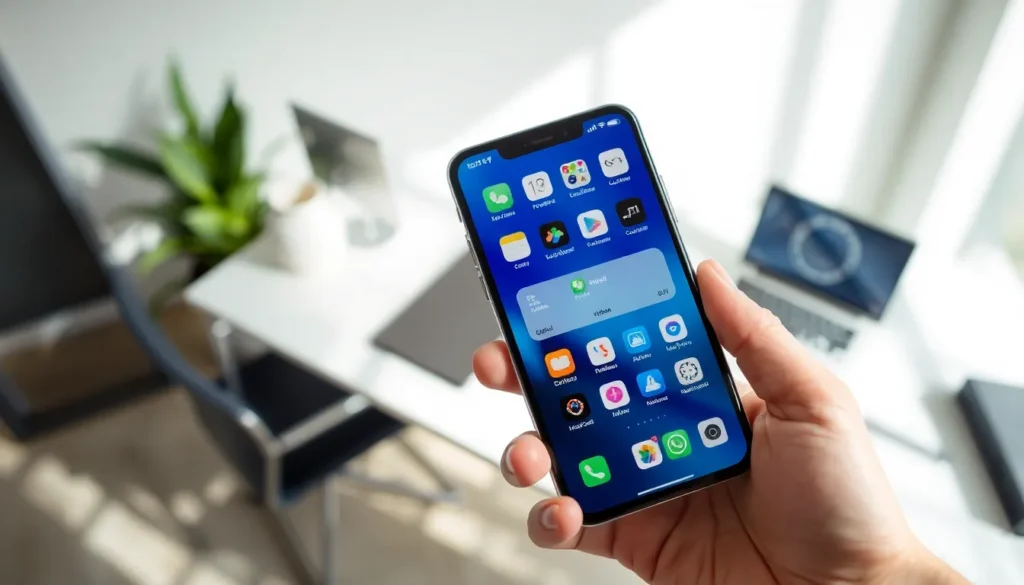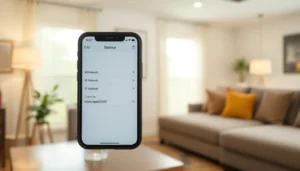Table of Contents
ToggleHave you ever had that awkward moment when someone asks to borrow your phone, and you quickly panic, wondering if they’ll stumble upon that embarrassing app you thought was safely tucked away? Don’t worry, you’re not alone. Many folks are on the hunt for ways to either find hidden apps or keep certain ones discreet. In this guide, we’ll dive deep into the world of hidden apps, exploring how to view them and maintain a well-organized app drawer. So, grab your phone, and let’s get started.
Understanding Hidden Apps

Hidden apps are those sneaky little programs that don’t show up in your usual app list. Understanding hidden apps is crucial if you want to navigate your mobile device effectively.
Types of Hidden Apps
There are several types of hidden apps. Some are designed to safeguard sensitive information, while others simply aim to declutter your app drawer. Here are common categories:
- Security Apps – These are often used to protect personal data and may hide themselves from prying eyes.
- Utility Apps – Sometimes, people use these to reduce distractions during work or study hours.
- Parental Control Apps – Designed for monitoring children’s usage, these can often conceal themselves to prevent tampering.
Reasons for Hiding Apps
People hide apps for various reasons. It might be to keep certain items private, avoid distractions, or manage what their children can access. Here are a few motivations:
- Privacy Concerns: To keep sensitive apps like banking or dating hidden from view.
- Organizational Preference: To maintain a cleaner, less cluttered home screen.
- User Control: Many parents use hidden apps to restrict access for their children.
How to View Hidden Apps on Android
Android devices have several ways to help users reveal hidden apps. Understanding these methods can simplify the process considerably.
Using the App Drawer
The app drawer is your first stop. To access hidden apps:
- Open the app drawer by swiping up from the bottom (or tapping the app drawer icon).
- Scroll through your apps. Some launchers allow you to toggle the visibility of apps, including those you might have hidden.
Accessing through Settings
If the app drawer doesn’t yield results, jump into your settings:
- Navigate to Settings > Apps or Application Manager.
- Tap on All Apps to view a comprehensive list, including hidden apps.
Third-Party App Launchers
If you’ve got a third-party launcher, it may have specific features to reveal hidden apps:
- Go to the launcher settings and look for an option labeled Hidden Apps or a similar term.
- You can adjust settings there to manage the visibility of your apps.
How to View Hidden Apps on iPhone
iPhones have their own unique approach to accessing hidden apps. Follow these steps:
Using the App Library
Starting with iOS 14, the App Library became an essential tool:
- Swipe left on your home screen until you reach the App Library.
- You’ll see all installed apps, and if you’ve hidden any, they might show up here, so keep an eye on each category.
Searching for Hidden Apps
A quick and efficient method is to use the search function:
- Swipe down on your home screen to bring up the search bar.
- Type the name of the app. If it exists on your device, it should pop up.
This method saves time and avoids scrolling through multiple screens.
Using Restrictions or Parental Controls
Managing hidden apps involves using the built-in restrictions or parental controls on your device. This is crucial for both parents and users looking to restrict app usage.
Managing Hidden Apps on iOS
With Apple devices, follow these steps:
- Go to Settings > Screen Time.
- Tap on Content & Privacy Restrictions to adjust specific app settings.
- If an app is hidden due to restrictions, you can reverse this from the same section.
Managing Hidden Apps on Android
For Android users:
- Open Settings and go to Digital Wellbeing & Parental Controls.
- Here you can manage which apps are hidden or restricted based on usage patterns.
Tips for Keeping Apps Organized
Organizing apps goes beyond just hiding them away. Keeping your apps tidy enhances productivity and usability.
Regularly Reviewing App Settings
Periodically check your app settings to ensure nothing remains hidden unintentionally. This can also prevent unnecessary clutter from accumulating over time.
Using Folders Effectively
Create folders based on app types, this could be gaming, productivity, or social media. Utilizing this feature keeps similar apps together, improving overall navigation. Plus, it’s a great way to quickly access frequently used apps.







